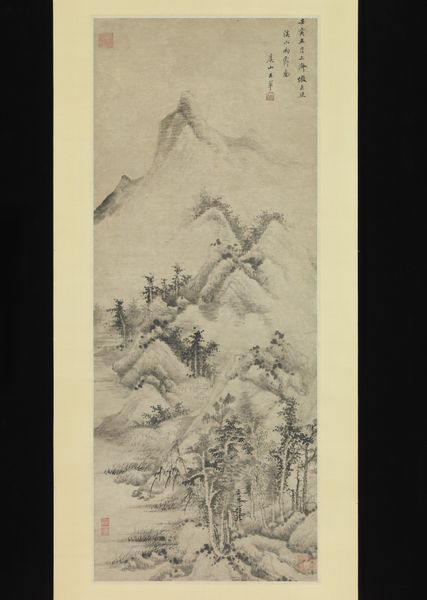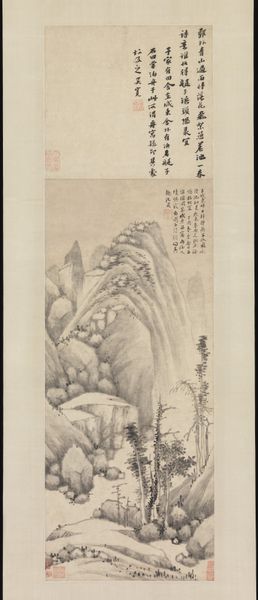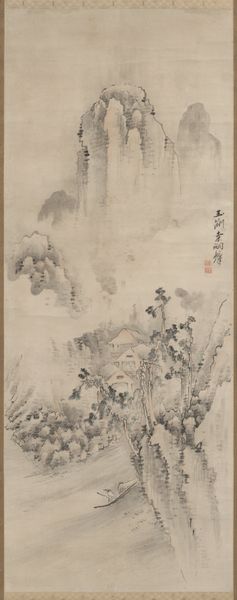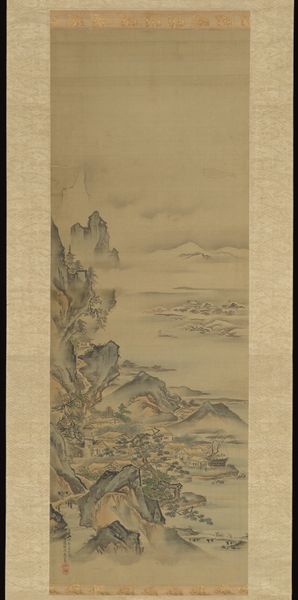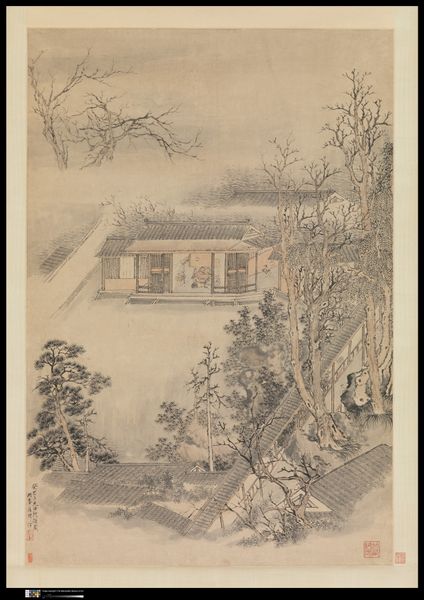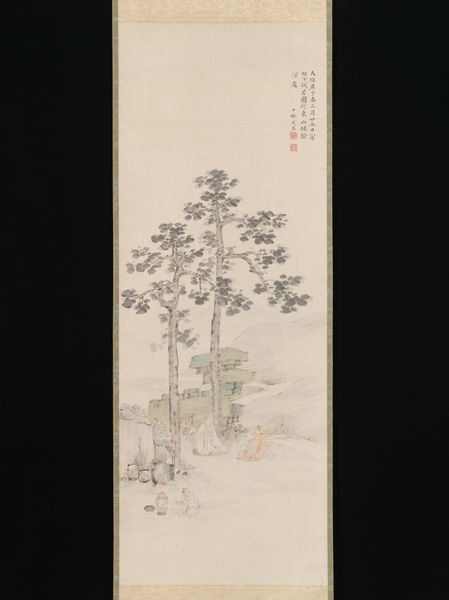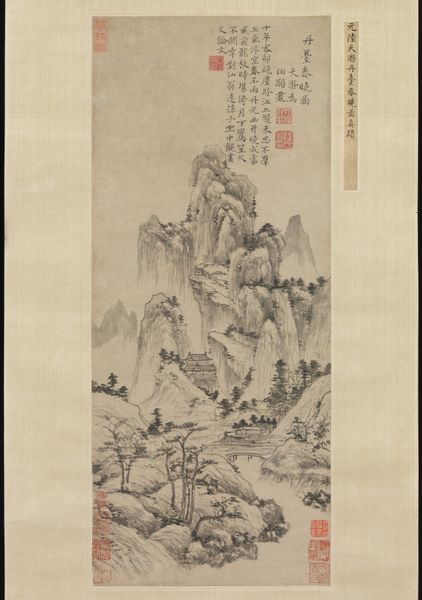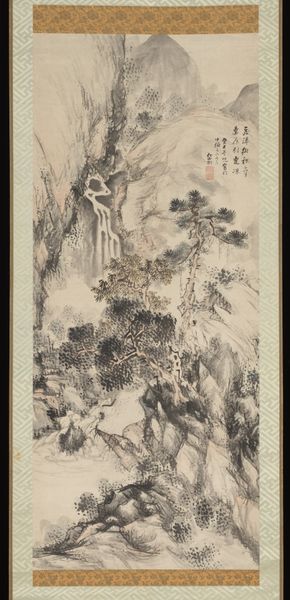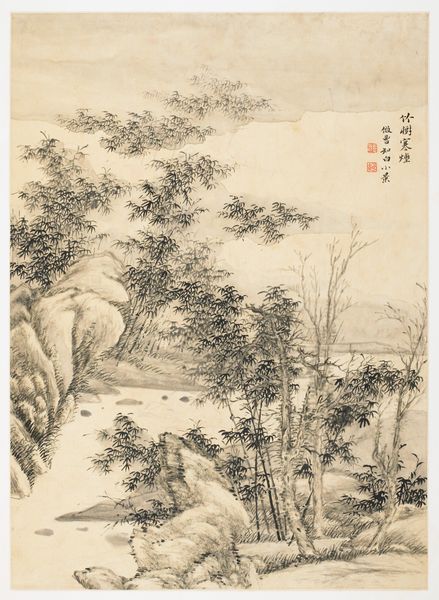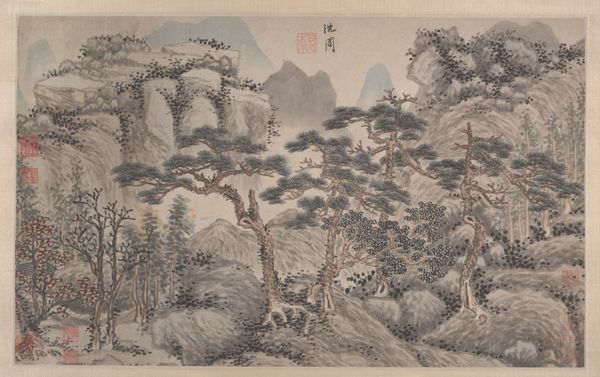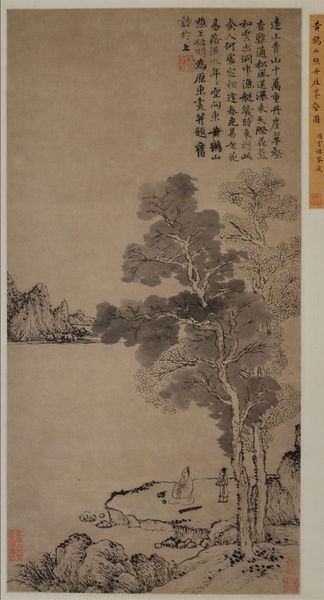
tempera, painting, paper, ink
#
ink painting
#
tempera
#
painting
#
asian-art
#
landscape
#
paper
#
form
#
22_ming-dynasty-1368-1644
#
ink
#
realism
#
calligraphy
Dimensions: Image: 37 1/2 x 18 in. (95.3 x 45.7 cm) Overall with mounting: 82 1/8 x 25 1/4 in. (208.6 x 64.1 cm) Overall with knobs: 82 1/8 x 29 5/8 in. (208.6 x 75.2 cm)
Copyright: Public Domain
Editor: Wen Zhengming's "Living Aloft: Master Liu's Retreat," created in 1543 using ink and tempera on paper, offers a glimpse into a serene landscape. The almost monochromatic palette and the delicate brushwork give the scene a quiet, contemplative mood. How do you see the materiality influencing our understanding of the scene depicted? Curator: The choice of ink and tempera is incredibly relevant. Ink, traditionally associated with calligraphy and scholarship, speaks volumes about the cultivated nature of the depicted retreat. Tempera, as a binding agent, raises interesting questions about the labor involved in pigment preparation, grounding the supposed idealism of retreat within the tangible world of artisanal skills. Does this then influence how we might read the calligraphy and artist signature included? Editor: That's interesting! I hadn't thought about tempera beyond just being a painting medium. You are right, it must involve considerable labour. How does understanding the materials and making change the scene portrayed, that of a scholar escaping everyday life? Curator: Precisely! We are prompted to think critically about how the ‘escape’ is conceived and facilitated by very real, material circumstances. The paper itself, where it was sourced and who crafted it – consider that as an act of laboring as well. Instead of a purely romanticized vision of a recluse, the ink washes and material suggest this retreat is materially produced, and inherently intertwined with larger societal and economic systems. How does knowing all of that affect our viewing experience? Editor: It definitely complicates the simple idea of retreat, making you think about the resources, and even labor, needed to sustain such a lifestyle, not everyone has that opportunity. I learned a lot about considering the context beyond the simple imagery today. Curator: Indeed! Recognizing art as material production pushes us to examine not just beauty or form but the hands and resources that bring it into being, thereby situating it within its specific social and historical fabric.
Comments
No comments
Be the first to comment and join the conversation on the ultimate creative platform.

